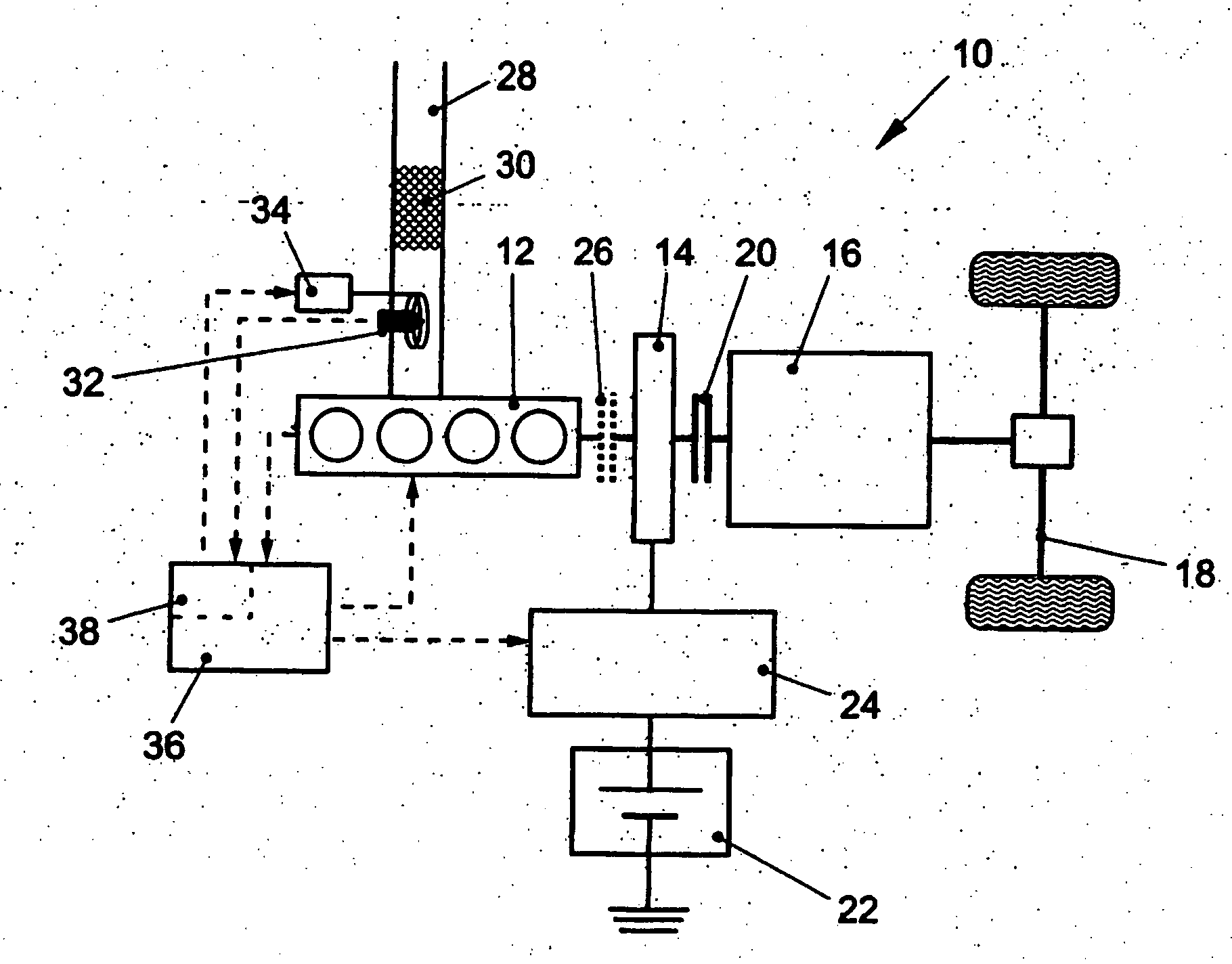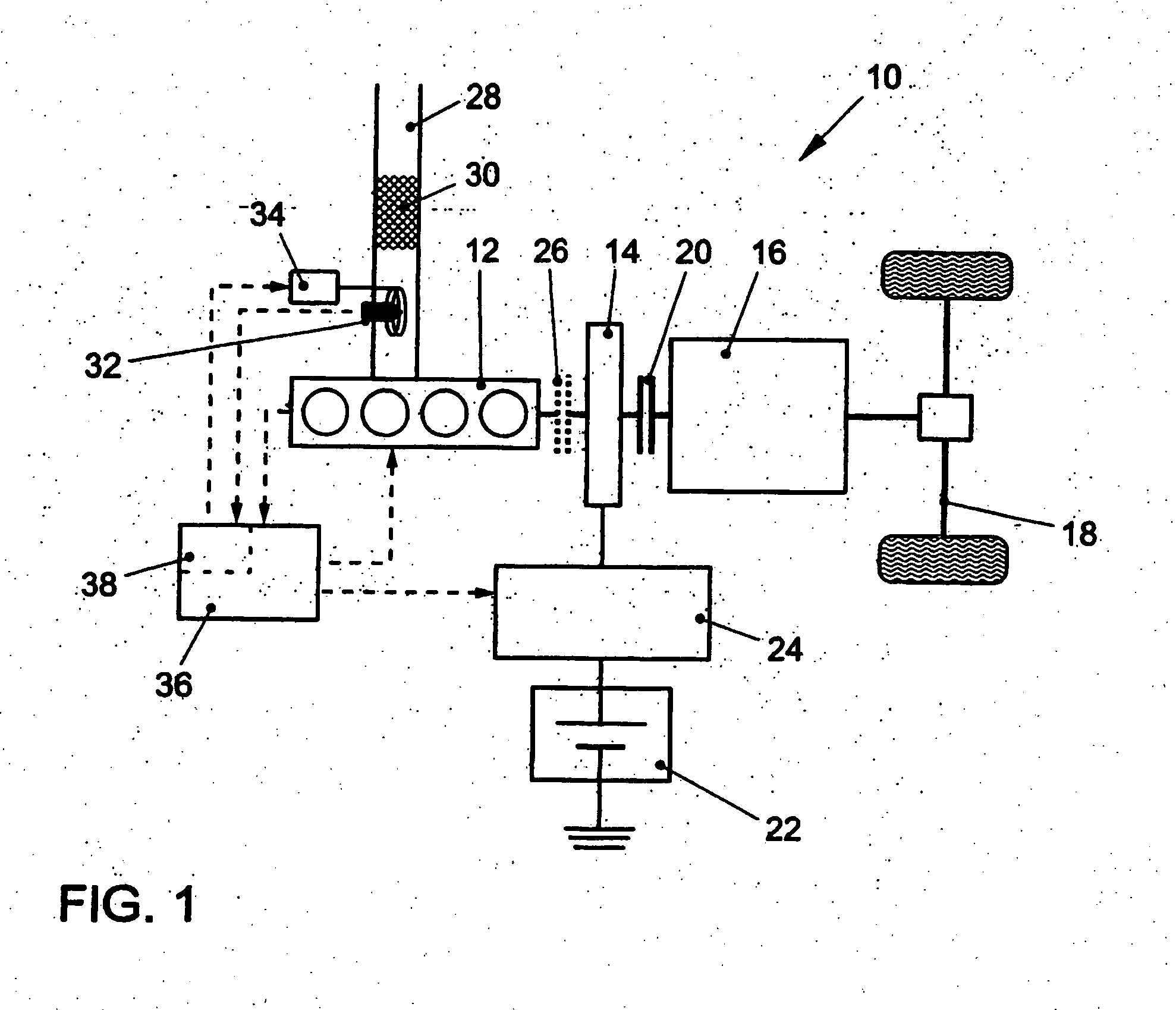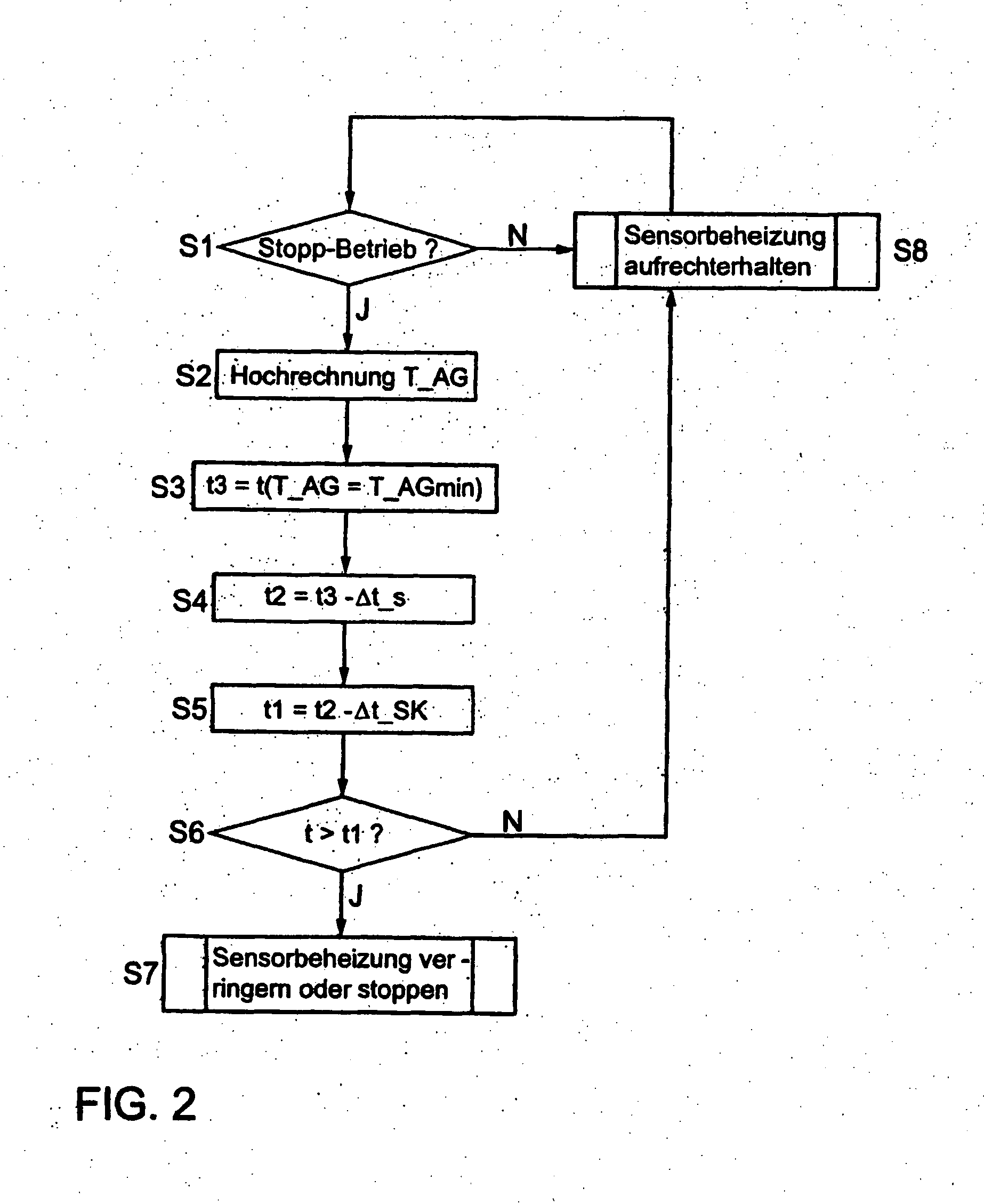Method for Controlling an Operation of a Heatable Exhaust-Gas Sensor of a Motor Vehicle
- Summary
- Abstract
- Description
- Claims
- Application Information
AI Technical Summary
Benefits of technology
Problems solved by technology
Method used
Image
Examples
Embodiment Construction
[0023]In FIG. 1, 10 as a whole denotes a hybrid drive unit of a hybrid vehicle. The driving of the vehicle is optionally or simultaneously implemented by a conventional combustion engine 12 (Otto or diesel engine) and an electromotor 14, which both act on the same shaft. In particular, electromotor 14 acts on the crankshaft of combustion engine 12 either directly or via a transmission or via a belt, a toothed belt or some other non-positive and / or positive connection. Via a transmission 16 (automatic or manual transmission), combustion engine 12 and electromotor 14 are connected to a drive train 18. The decoupling of the drive shafts of combustion engine 12 or electromotor 14 from transmission 16 is implemented with the aid of a clutch 20, which is able to be released by the driver by activation of a clutch pedal and which is locked when not activated.
[0024]Electromotor 14, which is a three-phase asynchronous motor or three-phase synchronous motor, for instance, may optionally be op...
PUM
 Login to View More
Login to View More Abstract
Description
Claims
Application Information
 Login to View More
Login to View More - R&D
- Intellectual Property
- Life Sciences
- Materials
- Tech Scout
- Unparalleled Data Quality
- Higher Quality Content
- 60% Fewer Hallucinations
Browse by: Latest US Patents, China's latest patents, Technical Efficacy Thesaurus, Application Domain, Technology Topic, Popular Technical Reports.
© 2025 PatSnap. All rights reserved.Legal|Privacy policy|Modern Slavery Act Transparency Statement|Sitemap|About US| Contact US: help@patsnap.com



